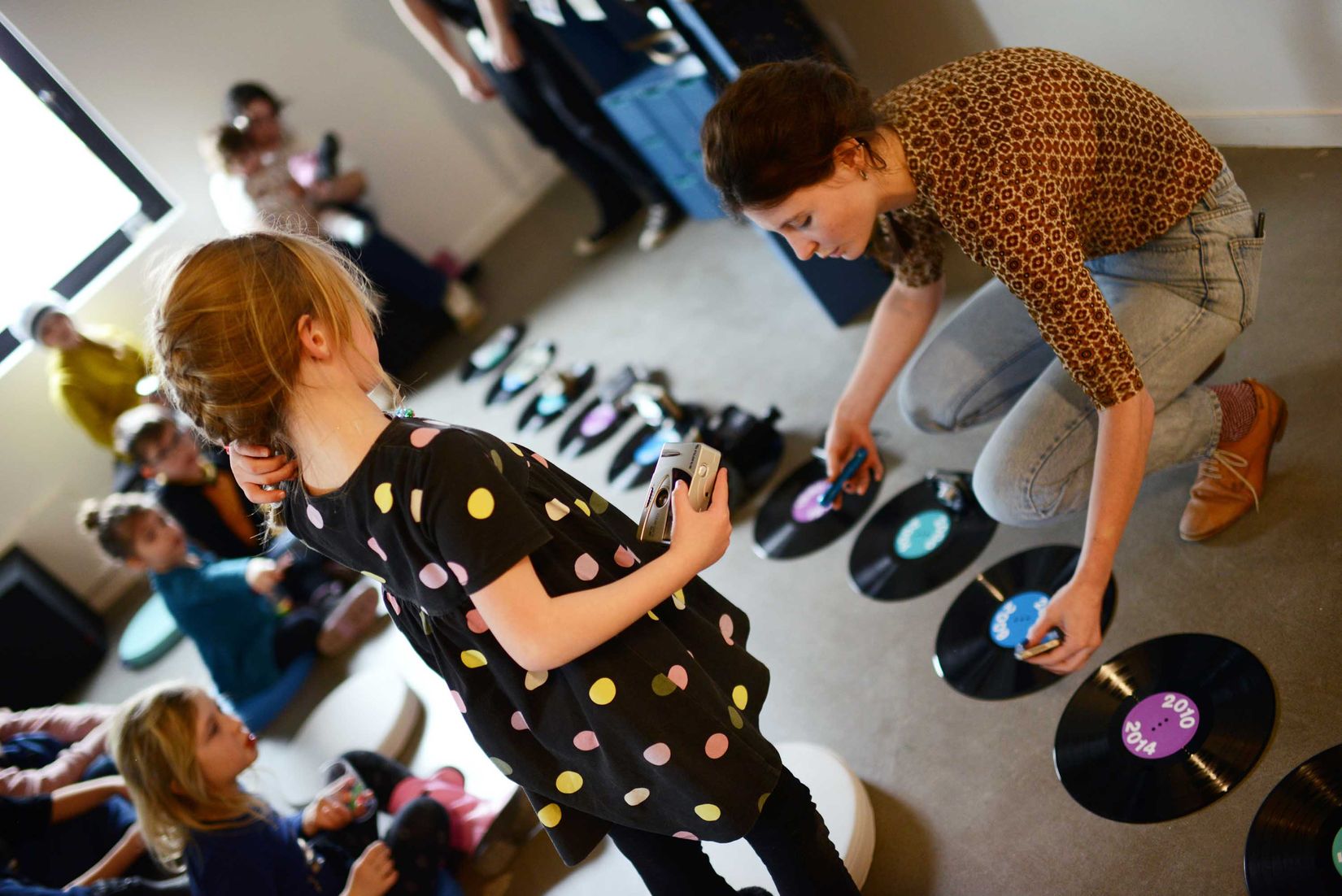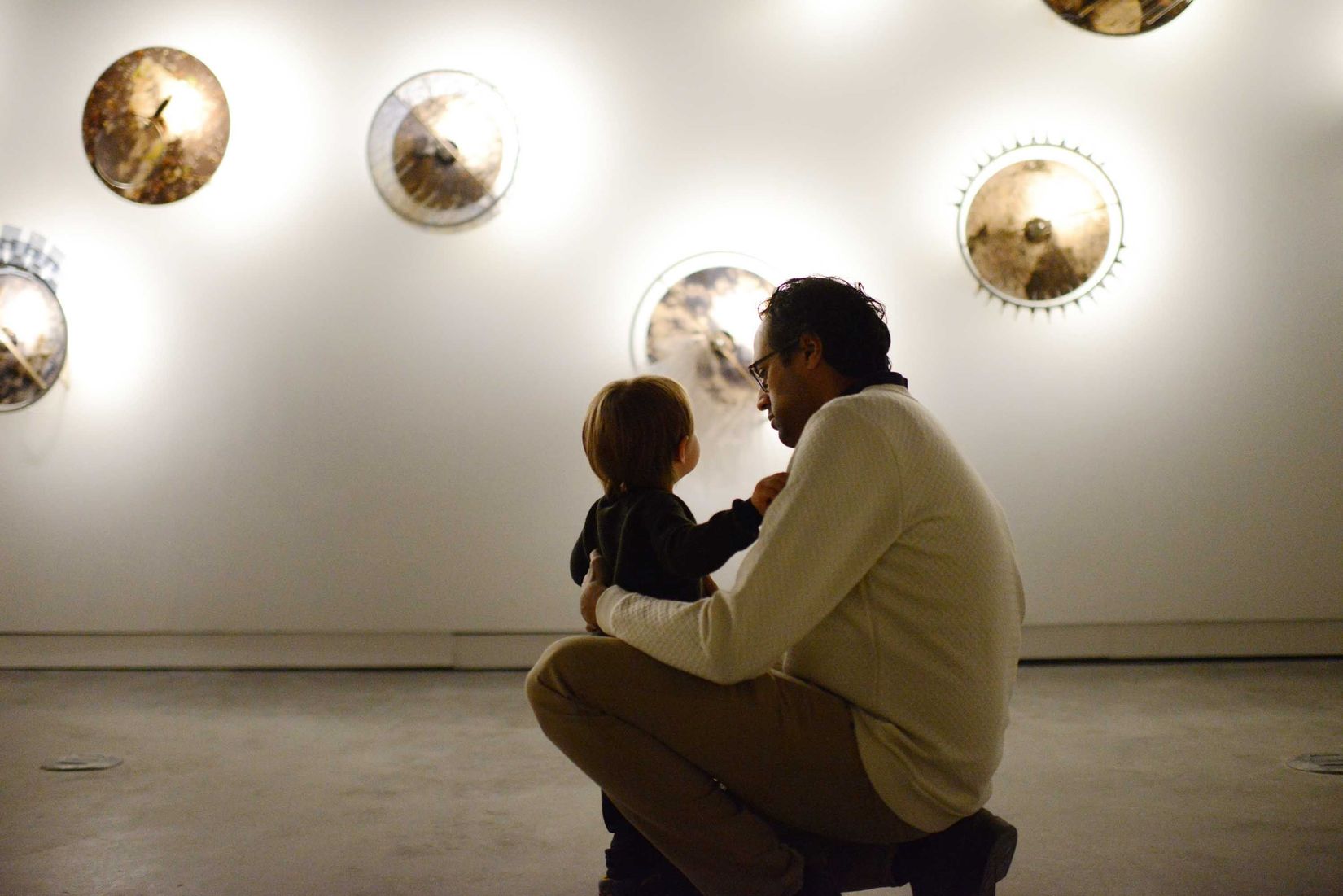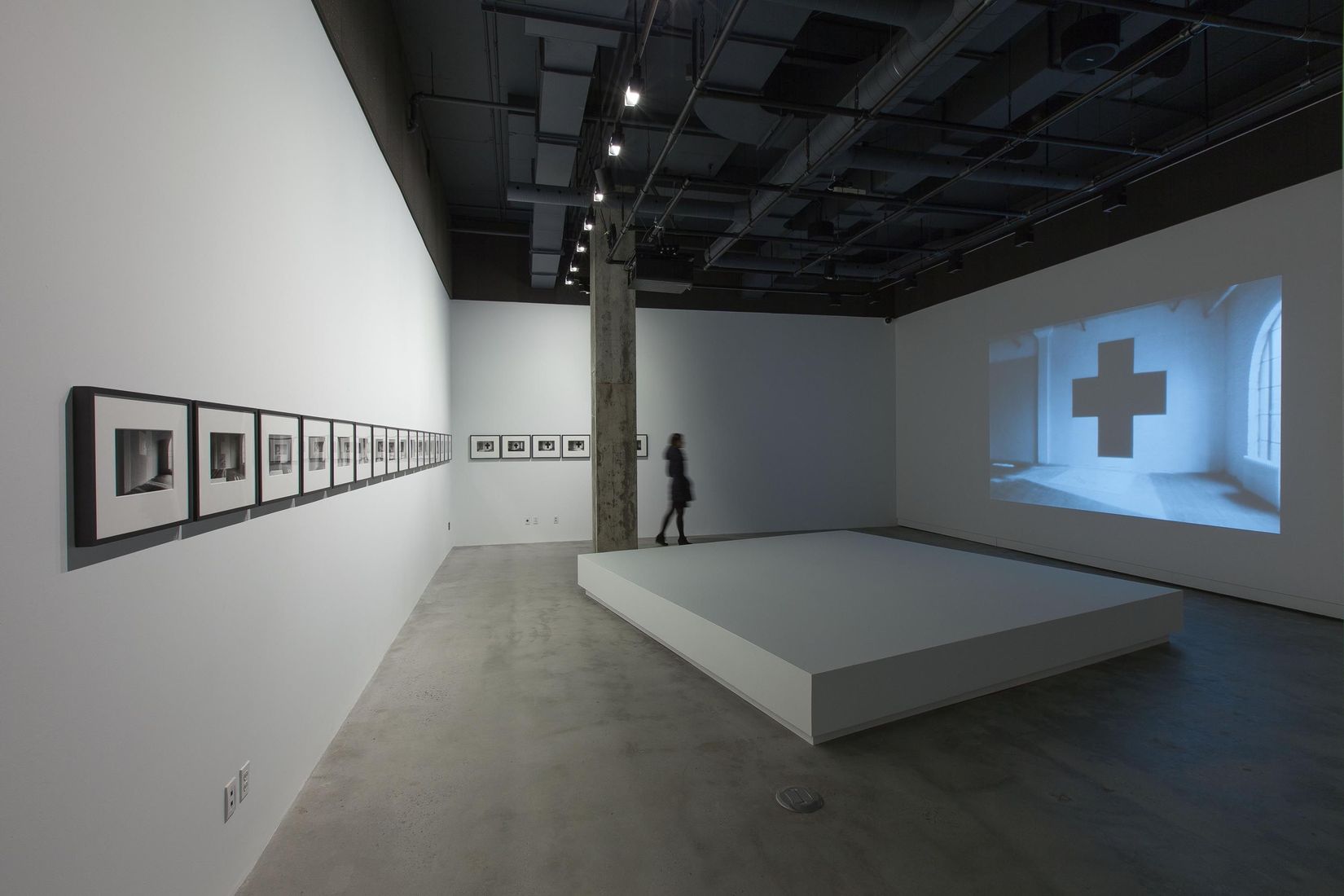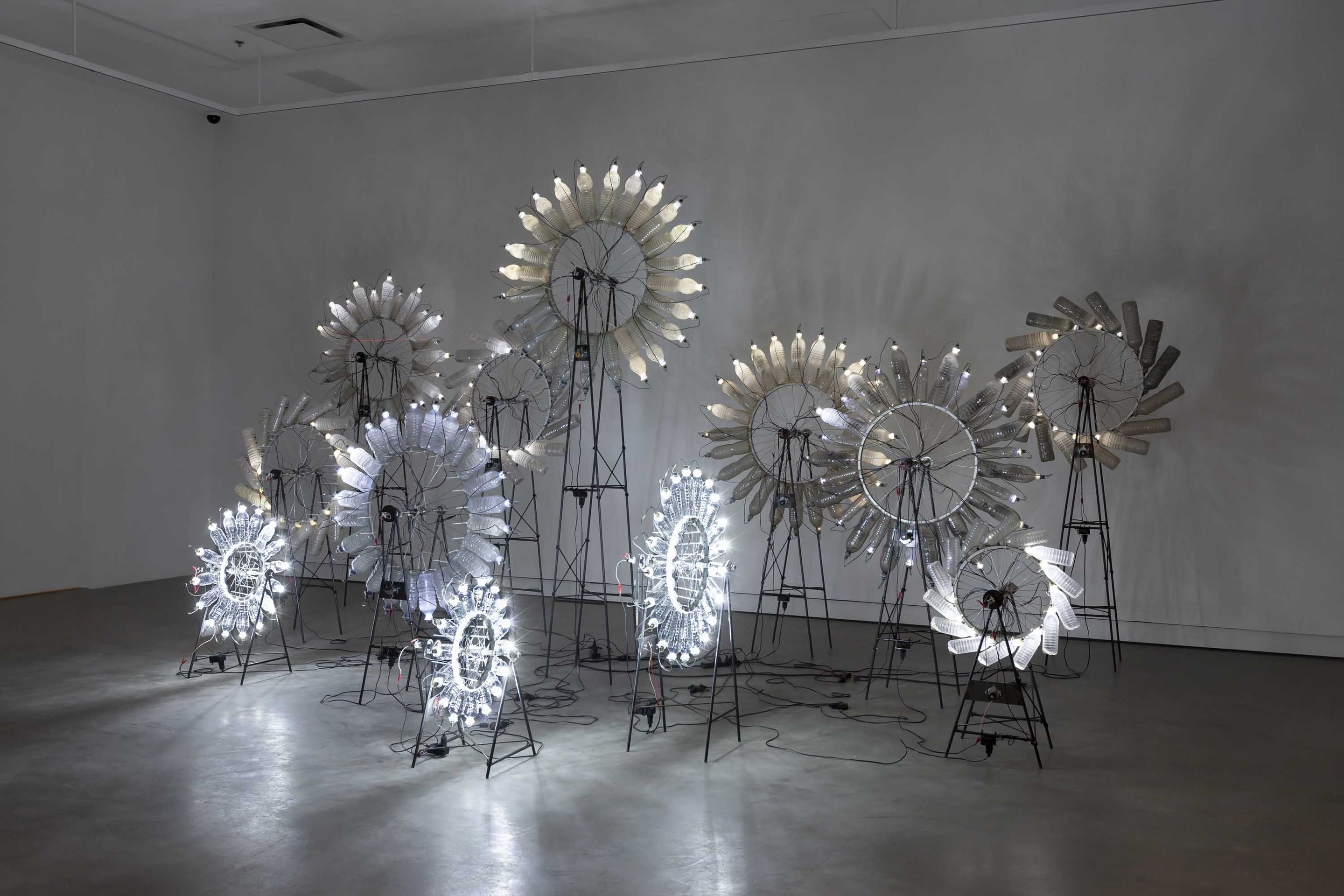
Diane Landry
Transparent Foretellings
2023.03.25 - 06.23
MARIE J. JEAN
Time is ever moving. It punctuates, it passes, it lasts, it speeds up or slows down–but it never stops. It takes shortcuts; sometimes it drags on. Time is also within us, activating our internal clocks, yet does not depend on us. It is duration, of varying scale. It sets the pace of microcosms and of the universe. It runs the show. It marks evolution and foments revolutions. Our world is dominated by time; every minute counts, everything is clocked. No doubt this is what makes the concept of time so seductive: we acknowledge its action, we are determined by it but do not master it entirely. Works of art also have their own temporalities, which emerge in unexpected guises in the practice of Diane Landry1.
They are evident first of all in the mechanisms that activate many of her sculptures–mechanisms comprising small motors, gear wheels and pulleys, some of which transfer energy to other gear wheels. These are known as timing wheels because their diameter causes the rotation speed to increase or decrease and to adopt different rhythms, like that of human breathing or the blades of a windmill. Her most recent installation Grande Ourse and Petite Ourse also contains a series of photographic discs with horological mechanisms that impart oddly desynchronized temporalities. Sand is also present in some of her constructions, flowing into water bottles as if they were hourglasses, its weight, aided by small motors, activating curious luminescent wheels that call to mind perpetual motion machines. In Landry’s art, time runs in circles. It repeats itself, possibly infinitely, and reminds us that at the scale of nature, it is governed by cycles that renew night and day, the seasons, lunar and planetary rotations, not to mention all biological stages.
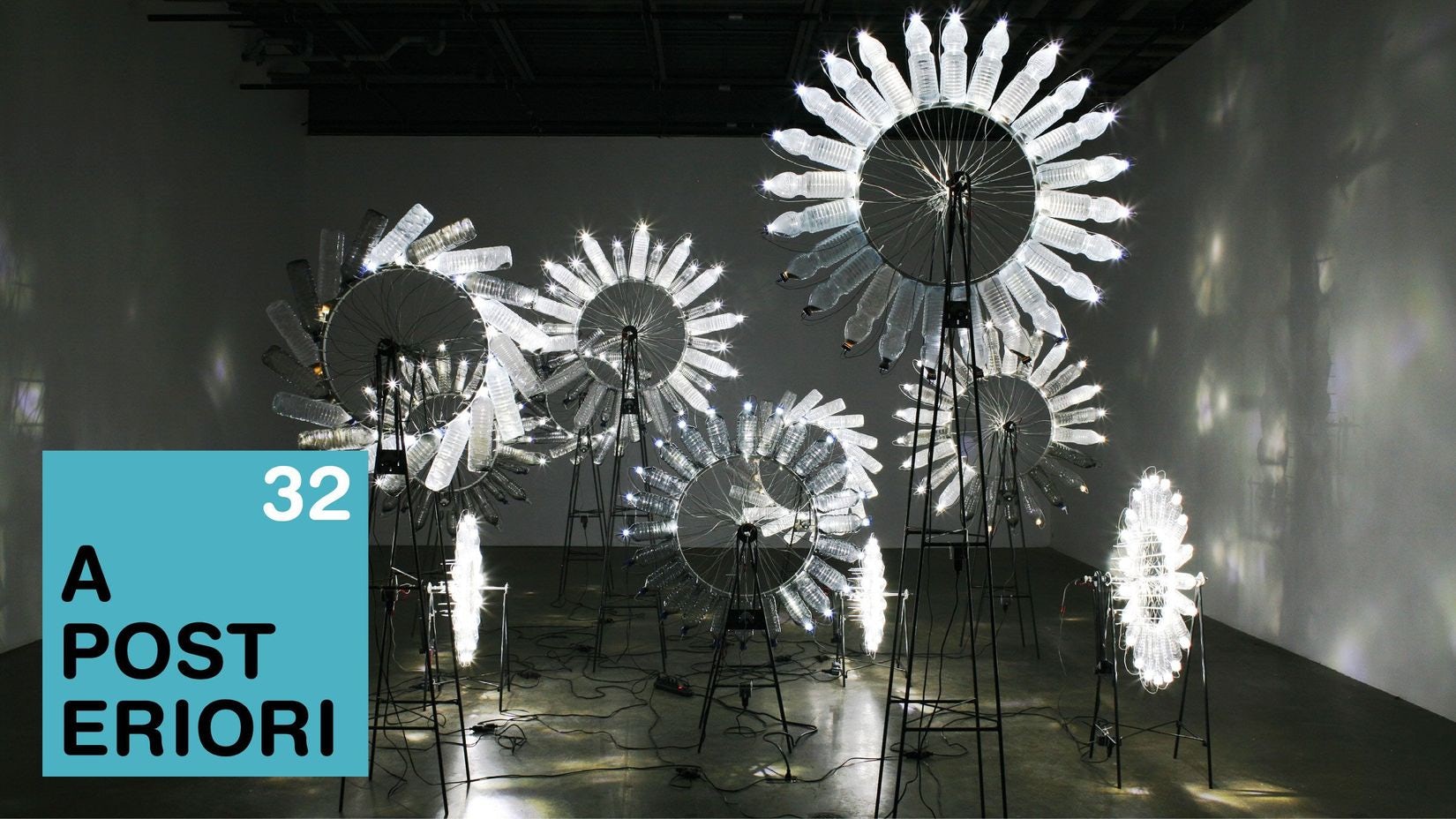
Landry also cultivates time. She lives it and devotes little effort to thinking about it. Since the mid-1990s, she has filled the time in her studio tinkering with her sculptures, dedicating herself almost exclusively to this inventive pursuit, working patiently and slowly. The rest of the time, she travels with her works or undertakes artist residencies all over the world. Before that, though, she studied and worked in natural science, including a stint in an agricultural research centre; she was even a mail carrier for a time. This likely explains why she has long been preoccupied by climate variability and warming. Her early kinetic works projected shadows and luminous reflections of found household objects; eventually, she added water bottles, plastic film and single-use utensils to the mix. The effect of her animated objects can be unsettling. In one sculpture, a single bulb affixed to a slider crank slowly advances inside a plastic laundry basket rimmed with recycled water bottles. The bulb projects a shadow of abstract, concentric patterns that expand, in a slow movement, to the entire space before contracting and returning to the centre. Even as we are utterly captivated by this harmonious, mandala-like projected form, the fact that these effects are produced by plastic objects gives us pause. This sensory contrast echoes the collective awakening that has been building since the turn of the current century: the climate emergency that every one of us now faces. The series, entitled The Blue Decline, addresses this political issue through an experience that evokes wonder, to which the artist has added a healthy dose of caustic humour.
“All times are not alike nor do they always run the same way,” to quote Don Quixote. Time, at the scale of the environment, is not measured in years; it must be counted in thousands of years. The pace of our lives, which is bound up with innovations and economic growth, has resulted in unprecedented social acceleration. One cannot accelerate a society, however, without dire consequences for the preservation of lifeworlds. The video performance A Radio Silence, which Landry created in 2008, provides an allegorical figuration of this paradoxical time horizon–as Hartmut Rosa calls it–observable in the resulting stop-motion animation. The artist photographed herself over three different twenty-four-hour periods, once a minute, assuming the same pose each time, standing in front of the windows of the Québec Studio in New York, where she was completing a residency. Using video editing software, she condensed each twenty-four-hour span into a little less than eight minutes’ running time. The setting remains fixed, but the artist’s immobile body appears jerkily animated, as varying light levels reveal the passage of day and night. This startling acceleration of time inevitably brings to mind the alienating tempo that we are subjected to every day. Compounding this are the technological innovations designed to permit us to go even faster. That imperative of speed, Rosa explains, is “like being on a down escalator and trying to walk up it: if we don’t accelerate, if we don’t make the effort to hasten our step, we will fall behind.”2 This is no doubt why we seem to be running out of time as never before.
Time moves forward, rarely backward. But producing a retrospective exhibition means revisiting the past, (re)discovering works, reinstalling them, contextualizing them, renewing their meanings–all of which again and again refers to time. And to turning back time. This exhibition thus takes a look back at artist Diane Landry’s career, presenting emblematic kinetic installations, performance videos and Celestial Mechanics, her most recent production, designed especially for children. If time is often conceptualized as a line advancing inexorably, Landry’s art expresses other temporal horizons that are not measured, but are lived and felt.
